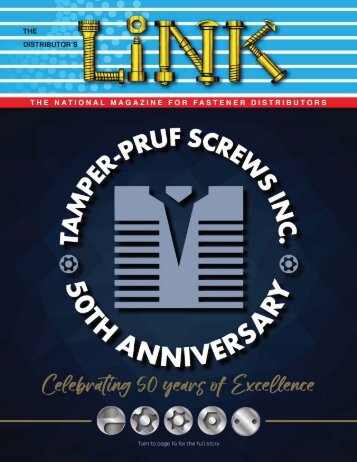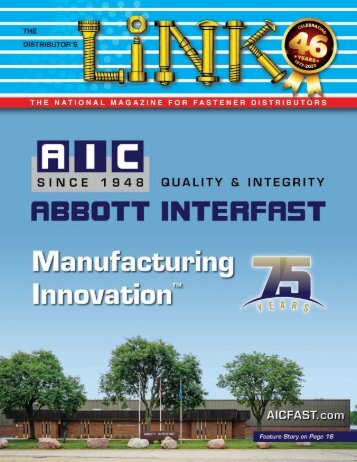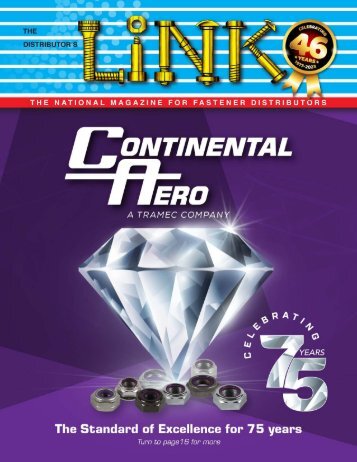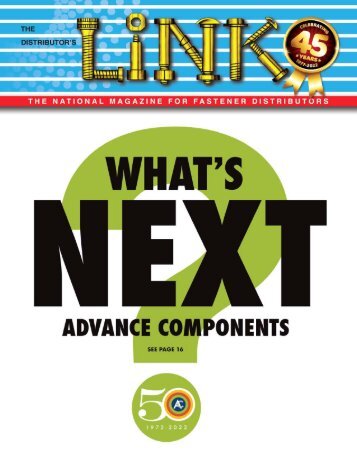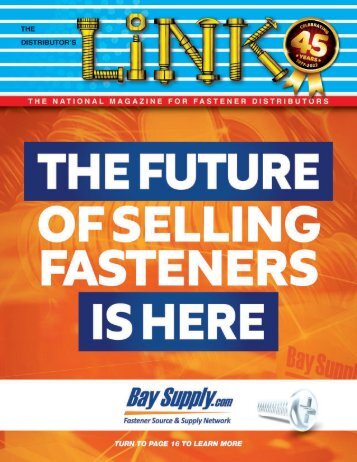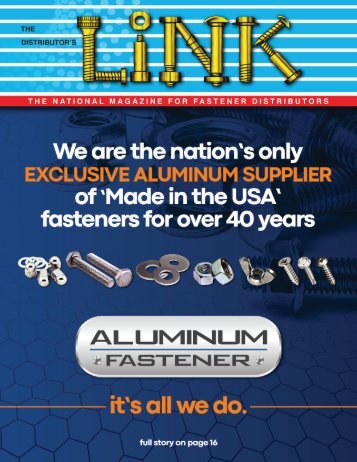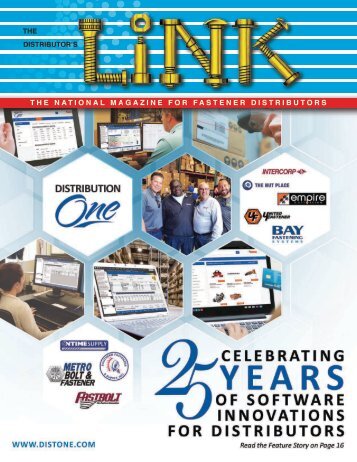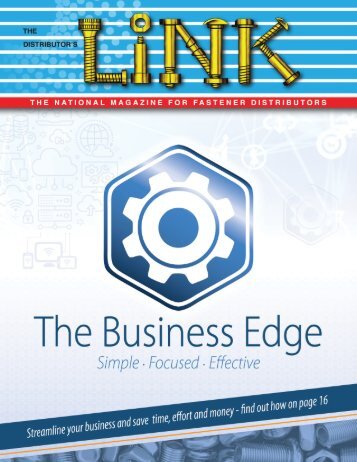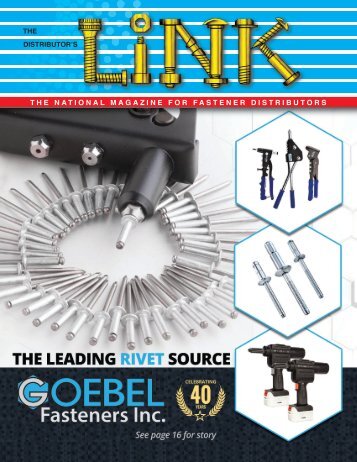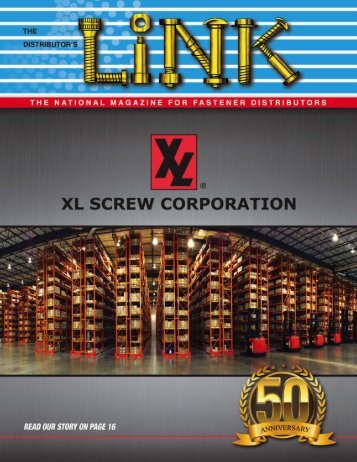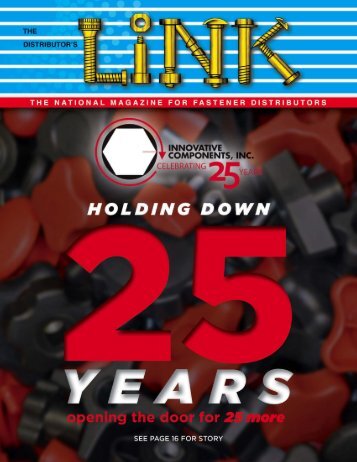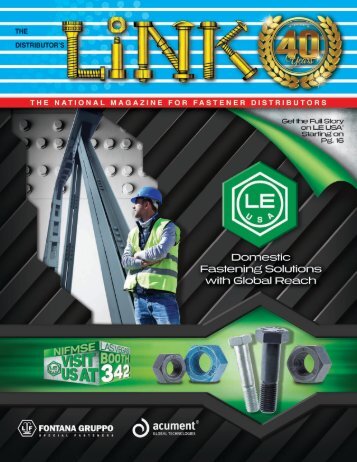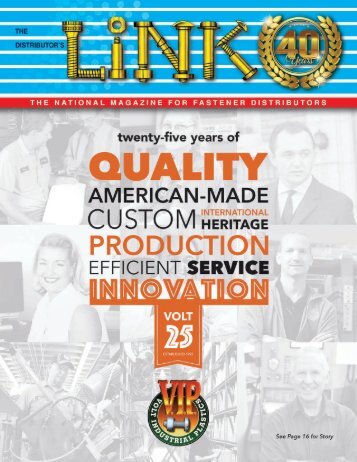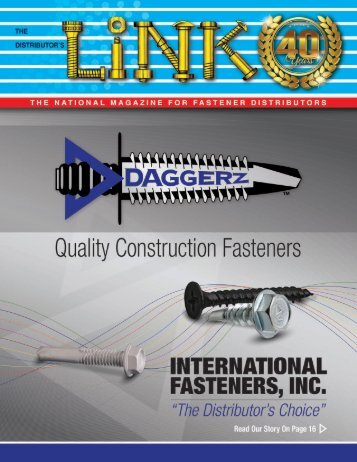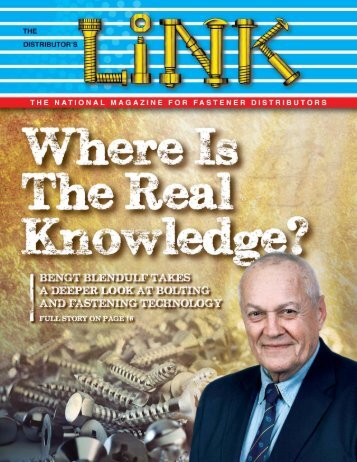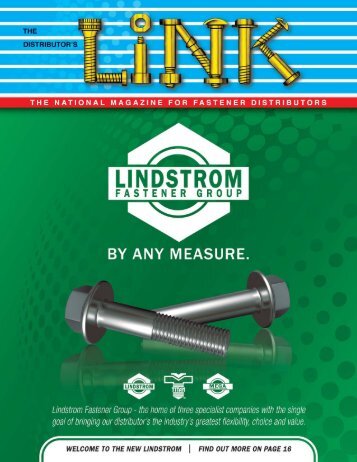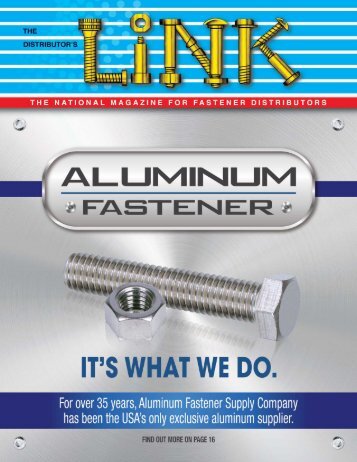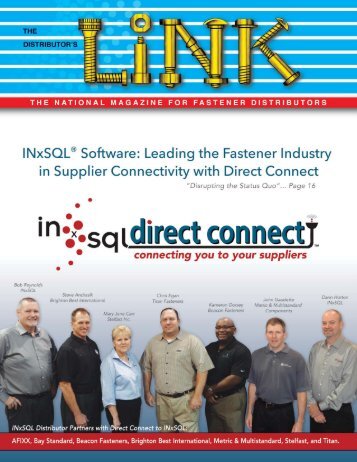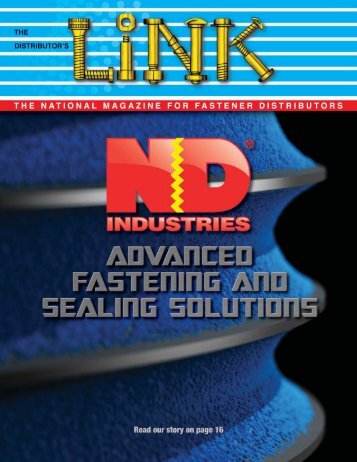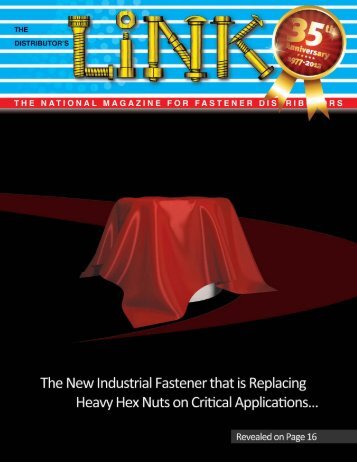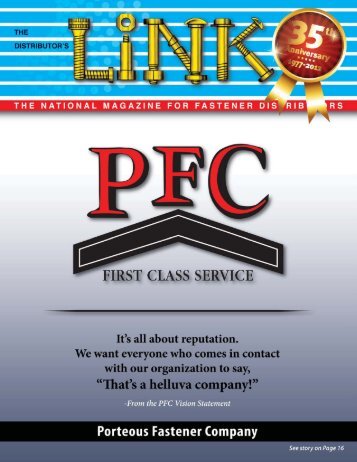WINTER 2012
- Text
- Fastener
- Fasteners
- Products
- Manufacturing
- Bolts
- Bolt
- Rivet
- Industrial
- Screws
- Distributors
38 THE DISTRIBUTOR’S
38 THE DISTRIBUTOR’S LINK Bart Basi Dr. Bart A. Basi is an expert on closely-held enterprises. He is an attorney, a Certified Public Accountant, and President of The Center for Financial, Legal & Tax Planning, Inc. He is a member of the American Bar Association’s Tax Committee on Closely-Held Businesses. Introduction BUSINESS VALUATIONS AND THE PROBLEM WITH THE 10th DECILE Publically traded companies have a ready market for their stock. Millions of stocks are traded everyday on Wall Street in a reliable manner. It would be difficult to argue that any given share price does not accurately reflect the company’s’ market value. Some companies have existed for 100 years or more and have paid dividends in many years. The behavior of large companies is dictated through specific rules including accounting rules, business judgment rule, and the market itself. These companies represent less risk than an investment in private companies. Issues in Valuing Closely-Held, Private Businesses Most private companies have been in existence for a short time and their continued existence depends on factors such as management, local conditions, customer base, and economic cycle, just to name a few. The behavior of private companies is largely dictated by the owners. The owners have nearly unmitigated rights in making decisions affecting the company. It is with this factor that the risks involved with small companies are much greater than the risks involved with large and, publically traded companies. Closely held companies are quite the opposite of large publicly traded companies when it comes to their valuation. Closely Held companies do not have a ready market and are much more difficult to value for any given transaction or purpose. It is to the valuation of a private, closely-held company that the build-up method is used to determine a risk factor. The build-up method is based upon current 20 Year Treasury Bonds, the S&P 500 activity, the size of the company, and the industry. The 20 Year Treasury Bond and S&P percentages are easily established. The Size Factor, not so much. Ibbotsons Valuation Yearbook is an authority on the size premiums that are appropriately used in the valuation industry for determining the risk involved in a private company. Many professionals are familiar with Ibbotson’s SBBI Valuation Yearbook. Within its contents are pages and pages of interesting explanation, a lot of numbers, charts, graphs, and the all critical “size factor risk ” that is so critical to valuing private businesses. While many size factors presented are easily explainable due to the size of the company and the market capitalization, the 10th decile and its split into 6 authoritative divisions only serves to complicate the job of selecting a rosk factor due to the size of the business. It begs the question; What is the most accurate size decile to be used through Ibbotson’s book please turn to page 152
THE DISTRIBUTOR’S LINK 39 KEY BELLEVILLES, INC. We are the largest Disc Spring Manufacturer! • Complete size range from .236” to 36” O.D. & 3” Thick • Largest Raw Material and Finished Inventory in the World • We manufacture Metric Parts to DIN Specs • Complete Line of Stainless and Inconel Parts • 10,000 Different Sizes in Stock Call toll free from anywhere in the U.S. and Canada at: Phone: 1-800-245-3600 • Fax: 1-800-847-1672 Key Bellevilles, Inc. 100 Key Lane • Leechburg, PA 15656-9531 U.S.A. Phone: 724-295-5111 • Fax: 724-295-2570 www.keybellevilles.com • e-mail: sales@keybellevilles.com Visit Our Website or Call for a FREE Engineering CD
- Page 6 and 7: THE DISTRIBUTOR’S IN THE WINTER 2
- Page 8: 6 THE DISTRIBUTOR’S LINK Nancy Ri
- Page 12: 10 THE DISTRIBUTOR’S LINK Compute
- Page 16: 14 THE DISTRIBUTOR’S LINK Jim Tru
- Page 26: 24 THE DISTRIBUTOR’S LINK Quantum
- Page 30 and 31: 28 THE DISTRIBUTOR’S LINK Robert
- Page 32: 30 THE DISTRIBUTOR’S LINK Advance
- Page 36: 34 THE DISTRIBUTOR’S LINK MFDA -
- Page 42: 40 THE DISTRIBUTOR’S LINK MFDA -
- Page 45 and 46: THE DISTRIBUTOR’S LINK 43
- Page 47 and 48: THE DISTRIBUTOR’S LINK 45 PWFA -
- Page 50: 48 THE DISTRIBUTOR’S LINK Great L
- Page 54 and 55: 52 THE DISTRIBUTOR’S LINK RETAINI
- Page 56: 54 THE DISTRIBUTOR’S LINK Anthony
- Page 60: 58 THE DISTRIBUTOR’S LINK MWFA -
- Page 64 and 65: 62 THE DISTRIBUTOR’S LINK Jennife
- Page 66: 64 THE DISTRIBUTOR’S LINK Joanne
- Page 71 and 72: THE DISTRIBUTOR’S LINK 69 photos
- Page 74: 72 THE DISTRIBUTOR’S LINK Dokka F
- Page 78 and 79: 76 THE DISTRIBUTOR’S LINK PWFA -
- Page 80: 78 THE DISTRIBUTOR’S LINK Powers
- Page 86: 84 THE DISTRIBUTOR’S LINK NOW YOU
- Page 90:
88 THE DISTRIBUTOR’S LINK SEFA -
- Page 93 and 94:
THE DISTRIBUTOR’S LINK 91 WCL Com
- Page 96:
94 THE DISTRIBUTOR’S LINK Mr. Mar
- Page 100:
NATIONAL INDUSTRIAL FASTENER & MILL
- Page 104:
102 THE DISTRIBUTOR’S LINK Trinit
- Page 108:
106 THE DISTRIBUTOR’S LINK Dave K
- Page 111 and 112:
THE DISTRIBUTOR’S LINK 109 NFDA -
- Page 114:
112 THE DISTRIBUTOR’S LINK Copper
- Page 117 and 118:
THE DISTRIBUTOR’S LINK 115 LESSON
- Page 119 and 120:
THE DISTRIBUTOR’S LINK 117 FASTEN
- Page 121 and 122:
THE DISTRIBUTOR’S LINK 119 Telefa
- Page 124 and 125:
122 THE DISTRIBUTOR’S LINK ARE BA
- Page 126 and 127:
124 THE DISTRIBUTOR’S LINK GET YO
- Page 128:
photos continued on page 128
- Page 131 and 132:
THE DISTRIBUTOR’S LINK 129
- Page 133:
THE DISTRIBUTOR’S LINK 131 The Au
- Page 137:
THE DISTRIBUTOR’S LINK 135 Big Re
- Page 145:
THE DISTRIBUTOR’S LINK 143 EFC In
- Page 150 and 151:
BRIGHTON-BEST NIFS COCKTAIL PARTY T
- Page 152 and 153:
photos continued on page 162
- Page 154 and 155:
152 THE DISTRIBUTOR’S LINK BUSINE
- Page 156:
154 THE DISTRIBUTOR’S LINK STRESS
- Page 160:
158 THE DISTRIBUTOR’S LINK WORK P
- Page 164 and 165:
photos continued on page 176
- Page 166 and 167:
164 THE DISTRIBUTOR’S LINK WITUCK
- Page 168 and 169:
166 THE DISTRIBUTOR’S LINK AVOIDI
- Page 170 and 171:
168 THE DISTRIBUTOR’S LINK ADVANC
- Page 172 and 173:
NATIONAL FASTENERS DISTRIBUTORS ASS
- Page 174:
172 THE DISTRIBUTOR’S LINK EARLY
- Page 179 and 180:
THE DISTRIBUTOR’S LINK 177 FASTEN
- Page 182:
180 THE DISTRIBUTOR’S LINK D cont
- Page 186:
184 THE DISTRIBUTOR’S LINK R cont
Inappropriate
Loading...
Mail this publication
Loading...
Embed
Loading...
|
SHARE A PAGE FROM THIS MAGAZINE OPTION 1: Click on the share tab above, or OPTION 2: Click on the icon (far right of toolbar) and then click on the icon (far right of toolbar) and then click on the  icon (top right of the page). icon (top right of the page).
|
View Archives
Copyright © Distributor's Link, Inc. All Rights Reserved | Privacy Policy







